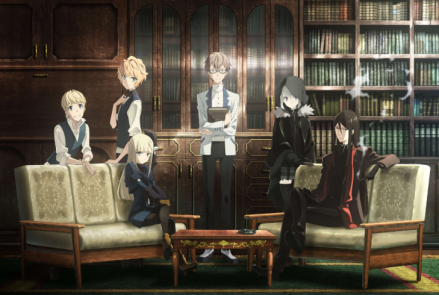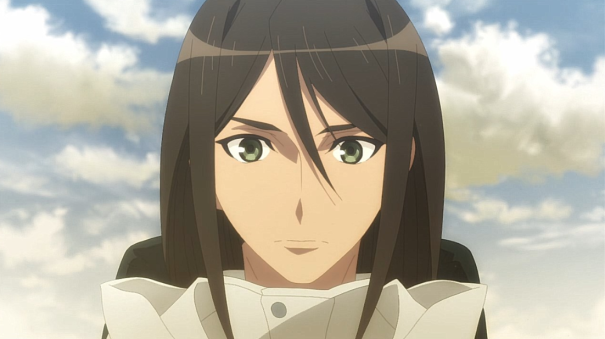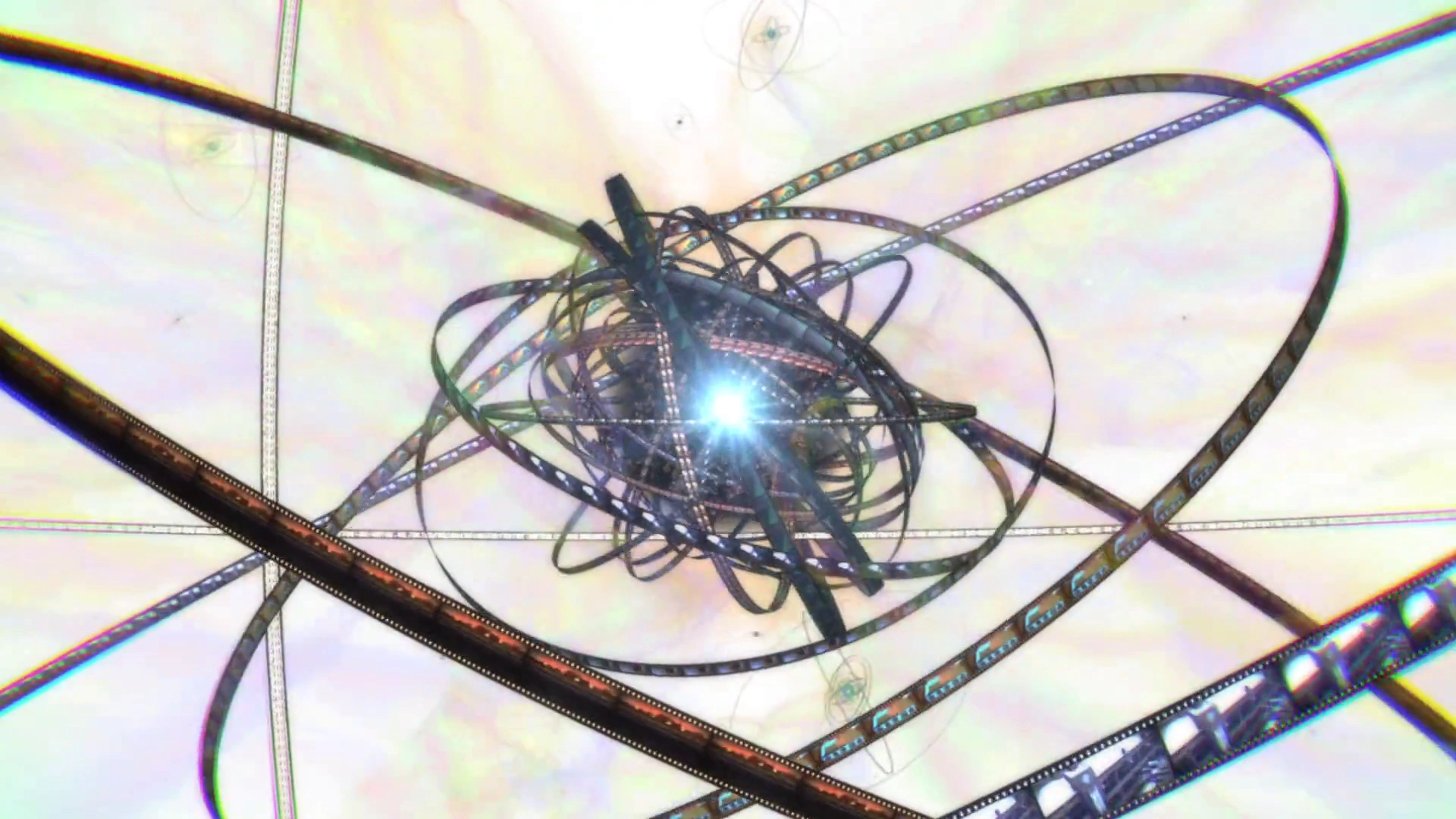A brief spoiler-free review of the 24-episode fall 2018 anime “Sword Art Online: Alicization,” animated by A-1 Pictures, directed by Manabu Ono, and based on volumes 9-14 of the light novel series by Reki Kawahara.

A New World of Legends & Lore
We know the soul to be a fairly abstract, complex concept—and yet, genius scientists at the private institute Rath have mapped out its innumerous intricacies down to the tiniest electrical signal. The Soul Translator is unlike any full-dive interface that came before it, as it connects users by interacting directly with their Fluctlight, the technological equivalent of the human soul. To perfect their system, they enlist the aid of SAO survivor Kazuto Kirigaya, whose experience in VR worlds is, well, unique to say the least. At Rath, Kazuto works part-time to test the system’s capabilities in the Underworld: the fantastical realm generated by the Soul Translator.
While his confidentiality contract forces any memories created by the machine in the virtual world to be wiped upon returning to the real world, Kazuto vaguely recalls a name—Alice—and looming feelings of frustration.
All looks well for Kazuto’s part-time gig, until one evening while escorting Asuna Yuuki home. A familiar shadow from old Aincrad days mortally wounds Kazuto in a fight, but when Kazuto awakens, he doesn’t find himself in a hospital bed, but beneath the tall trees of a forest. Somehow, he’s been forcefully plunged into the Underworld—and with seemingly no way to escape. With no where else to go, he sets off on a long quest for Central Cathedral, a tower that soars high into the clouds, which might contain the answers he seeks—including the dark secrets holding the fabric of this entire world together.

Once again, SAO is forcing light novel technological babble down our throats and naming it science. Call Kawahara’s musings with the concept of a physical soul the first major sci-fi plot hole in this newest story, but the series rolls with it anyway. Once you add in the fact that time experienced in the Soul Translator can be sped up by several hundreds or slowed way down, we might as well abandon all sense of realism and embrace fiction—as it should be.
All-in-all, SAO continues to be an engaging action fantasy series with a splash of sci-fi at its core. Unique to this newest story arc (the longest one in the series, might I add), is the central focus on the theme of adventure. You could say that SAO‘s always been an “adventure” series, and I wouldn’t disagree. But Alicization takes a more traditional approach to the genre. In Underworld, there are villagers, craftsmen, and other occupations customary of an old-fashioned fantasy adventure world. There are also magical rituals that the residents of Underworld engage in, spells, if you would, or “System Commands” as a gamer might know them. There’s more world-building in this single half of Alicization than in all of SAO‘s other VRMMO worlds combined—and to think that there’s ten times more to explore in the novels!

The Problem with Pacing
To be fair, even the source has this trouble, with one chapter encompassing the span of several years and THREE volumes chronicling a mere 24 hours. As far as I’m concerned, this marks Alicization‘s second half as having one of the longest days in anime history, and one of the greatest battles of attrition ever written. In true fantasy adventure style, resources become scarce the closer our hero(es) get to the tower. Just when you think you have it all figured out, expectations quickly get flipped on their head. Never have I had so much fun with the unpredictability of a narrative than I did while reading/watching Alicization.
Regardless of how you are consuming Alicization, it goes without saying that the story is full of deep lore, despite the rapid pace to fully appreciate it all. One of my favorite gimmicks from the series was how each Divine Object (AKA weapon) had a story to it, a history that plays a massive role in how to wield it correctly and unlock the blade’s full potential. Discovering how each foe’s blade was constructed (typically through the glorious art of combat) shows the depth of world-building and creativity that Kawahara has invested into this series.
In fact, the warriors we meet along the way (and their loyal weapon of choice) were SO cool that I was expecting lots of thrilling fights . . . which we only kind of got. While SAO continues with the theme of survival and the struggle to live, the fight scenes end so quickly that you’re left with very little fear for our characters’ well-being. After the visual marvel that was Ordinal Scale, I was expecting longer fights, more world-building, and more explanation, and while everything here is a good start, it’s not something I’d turn in for a final project. This story made me want so much from the fight scenes in particular, yet the rapid pace unfortunately leaves little to grapple with.

In general, there’s a lot of “dangling the carrot” with crucial story elements that the books thoroughly explored but the anime had to cut. Switching gears to something entirely new happens without warning, and this knowledge whiplash can leave viewers unsatisfied. This adaptation, despite totaling 50 episodes by the end, will be missing A Lot. For instance, there’s much more to the origin and purpose of the Gigas Cedar that anime-onlys will never get to understand, and that world-building element is crucial to helping define the personalities of many of these characters (like Eugeo).
Boy with the Flaxen Hair
The characters, OH the characters. I love the Alicization cast. Seeing Kawahara’s stylish knightly character designs come to life with splendidly textured armor and brilliant color palettes is especially a treat. For me, the titular Alice Synthesis Thirty was one that benefited the most from this adaptation. Maybe it was actually hearing her low, authoritative voice (thank you Ai Kayano), but every righteous word she speaks hold incredible weight to her character, and we are blessed that she has some of the best lines in the entire series. She is sure to play a critical role in the show’s second cour, no doubt about it.
Speaking of best lines in the series, I have to give it up to Alicization for giving us one of the coolest villain stories in anime. Administrator’s presence is legitimately chilling and terrifying. She’s a diva of chaos, yet so divine in her destructive ways. The allure of her calculating, piercing, silver eyes draws you in, marking her as manipulative, cruel, and obsessed with vanity and control. In this world, she is absolute authority, perfect stasis, and serves as a thrilling antagonist when pitted against the little mage in the library, Cardinal.

What makes Alicization so special to many fans (myself included) is the addition of Eugeo, Kirito’s faithful friend that he meets upon waking up in Underworld. He’s the boy with the flaxen hair, and few are as hardworking, kind, dedicated, and endearing as this country kiddo. Eugeo is the softest boy, the bestest boy, and he’ll make you tear up more than once for sure (BLESS his VA Nobunaga Shimazaki).
Watching Kirito’s quirks and mannerisms both clash and rub off on Eugeo during their Swordsman Academy years fills me with so much life. As he grows from humble woodsman to a noble knight protecting the human realm (and beyond), it becomes no contest that although Alice may carry the name of the series, Eugeo holds the heart. I think giving Kirito a companion—a friend—like Eugeo makes him seem more human than anyone else could.

Kitito’s headspace has always been crucial for understanding why this narrative is compelling, and the anime is notorious for cutting a lot of that out. While Aincrad, Fairy Dance, or Gun Gale weep, Alicization suffers. This entry in the franchise was the one able to prove to me that KIRITO IS A LIKABLE CHARACTER. But once again, the anime doesn’t give enough of his inner dialogue to completely convince you, which is deeply saddening cause, yeah, I like Kirito now.
Kirito’s inner turmoil about whether to save Alice Synthesis Thirty or the Alice Zuberg from Eugeo’s childhood—that which is the hero’s ultimatum—is almost entirely omitted, making the final fight seem significantly less weighty and stressful than it should. Eugeo’s sad struggle to connect with his family is vaguely mentioned, despite it being the anchor holding him back in the beginning arc (and being key manipulation for his actions near the finale). And I haven’t even started on the knights! I’m telling ya, read the books!

An Ambitious Project
I thought Fate UBW was wild, but wow, the digital effects work for Alicization is just nuts. Absolutely stellar coloring, layering, lighting, textures, special effects—you name it. The fights are exciting and fluidly animated, yet some of the camera angles and visual distortions don’t pay off as well as they may have been intended to. Some combat moments feel stiff or unrealistically warped, detracting from the thrill of battle. Other fights have awkward choreography, but otherwise decent direction from Manabu Ono. A quick shout-out to the background artists, as Alicization is full of beautiful scenery—the scaling of the landscapes is truly awe-inspiring!
Given its rapid pace, huge ensemble of colorful characters, and reliance on high-energy fight sequences, animating the entirety of the Alicization was an ambitious project on A-1’s part. With a grand 50 episodes spanning across several seasons, it’s almost expected that animation quality will eventually dip in parts. Although most of the shots themselves are beautiful, there is no shortage of impossible midair jumps and lofty sword swings to be found. That said, the opening confrontation with the goblins and the light-show spectacle of Kirito and Eugeo vs. Fanatio boast thrilling, gorgeous animation.
So, it’s a bit of give-and-take, but overall a very solid production minus some awkward fight choreo here and there. (The Blu-ray edits bring drastic improvement the broadcast version, including vibrant lighting and layers of cool new special effects previously unseen!)

Wherever might the visuals stumble, the music soars. Kajiura makes SAO always worth it. Easily her best work with the series yet, Kajiura continues to create strong themes for these characters. The iconic “Swordland” theme (reprised here as “Sacred Swords”) will never not make my heart fill with overwhelming feelings. Listening to “Gigas Cedar,” “Sometimes she feels lonely,” “Tenderness and Strength,” “Climbing up the wall,” “Quinella,” and “She won’t stand for it” remind me of the chivalry, nobility, and courage of Eugeo, Alice, and all the other knights.
Manabu times these epic theme drops with all the crazy special effects of swords clashing and rippling energy beams to create utterly perfect sound direction. It’s an enchanting soundtrack rich with melancholic piano solos, delicate harp ballads, dramatic orchestral and choral tracks, and inspiring percussive anthems—heck, it wouldn’t be far off to call this one of my favorite OSTs in all of anime. ALSO, LiSA’s “Adamas” is best OP!!

Pulling Everything Together
The larger themes that SAO has been playing with since old Aincrad days finally come to the forefront in Alicization‘s legendary first half: What it means to live in a virtual world. What value virtual life has. The irony of fate. Desire and temptation. The cruelty of love. Obsession and deception. What it means to control. The roles of power and influence. What it means to be the hero. Defying our program to do what we think is right. And whether painful memories that only cause grief are worth keeping. Yes, SAO has always been this deep, and it only gets better.
With mystic foreshadowing, emotional highs and lows, excellent dialogue that is both powerful and poetic—these are the things that I want from not just SAO, but a true fantasy epic; the deeply integrated sci-fi background makes it all the more unique and fascinating. Each development builds on the one that came before, yet in a way that makes everything you previously knew to hold so many different, often construed and conflicting meanings. Again, the use of dramatic irony is highlighted, especially in some of the mid-late developments.
Wrought with dynamic character motives, a tightly written story, music that is equal parts enchanting as it is epic, and loaded with many twists and turns, SAO has never been this intriguing. BUT, it runs at an uncomfortably fast pace, almost too fast to revel in the intrigue of each world-shattering reveal. In the moments where I wanted Alicization to slow down and tell me more, it’d only rush along further.
That doesn’t stop the adaptation from being a highly entertaining watch, however—and one that I’ll continue to recommend for years to come. A tale woven with misfortune and heroism at every bend in the road, few stories have left me as shocked and caught off guard as the one Alicization has told so far. I eagerly await to see how War of Underworld picks up the pieces from this thrilling first act in what is sure to be a brilliant conclusion to this grand fantasy epic in the making.

Love isn’t about control. Nor is it something you can gain as a reward or in a transaction. The same way you water flowers, you give it continuously. I’m sure that that’s what love is! — Eugeo
Afterword
Now, even I know that skipping the books of any series to watch the movie will involve leaving much of the original story left behind. But, at the same time, I can’t force it upon a person to read TEN freakin’ books just for this. That said—you won’t regret it, that I 100% guarantee you. You’re probably already so sick of hearing this, but Alicization really is a different beast from its predecessors. So please, consider checking it out if you thought you already might’ve given up on the franchise.
Thanks to Alicization, I came to love these characters and their world, felt new things about characters I thought I already knew everything about, and fell in love with a story. Since I have read the novels, my review is a bit biased, I realize. However, I’m still going to give Sword Art Online: Alicization the “Cafe Mocha” rating, sealing it as one of the most entertaining anime I’ve ever watched (and one of my favorite stories ever told)!
I know opinions are pretty well divided by this point, and that’s understandable. But, to those who enjoyed this first half of the Alicization story, what did you like most about it and why? Who’s sticking around for the second half of War of Underworld? I’m such a big SAO geek, and I’d love to hear your thoughts on the series, positive or negative, in the comments! Who knew I could ramble on about this series for so long? Thanks so much for reading, and until next time everyone!
– Takuto, your host


























